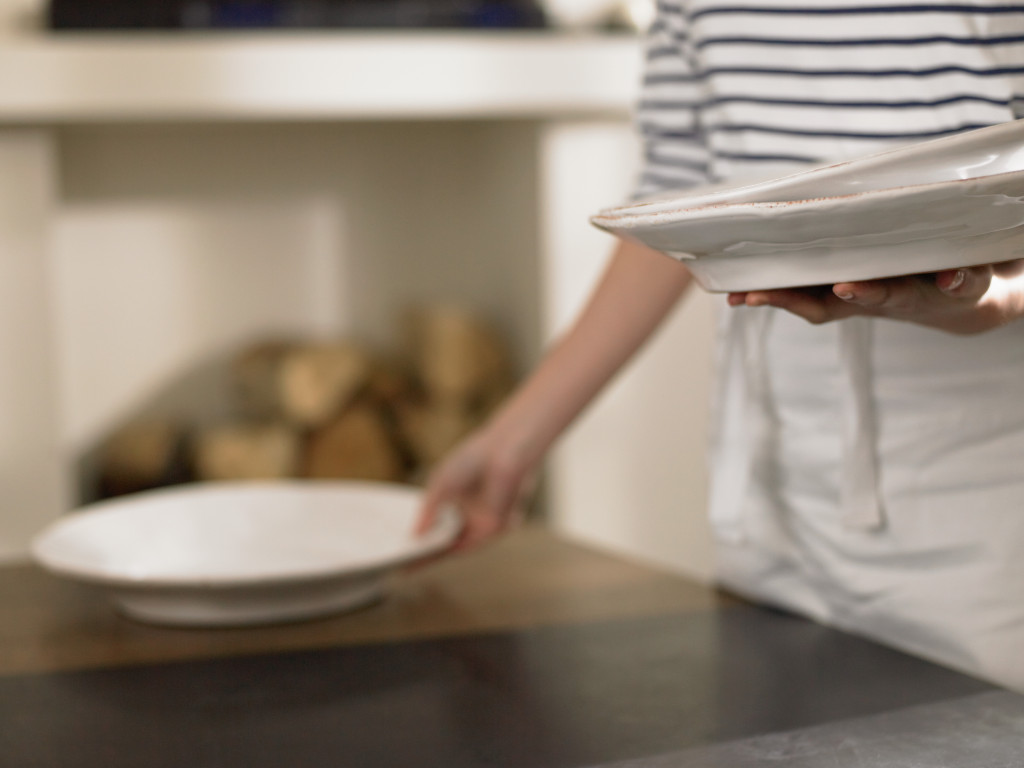
We’ve been to the moon and back, but we’re still cleaning the way we did 100 years ago, and those habits are hard to change. We think it’s not clean unless we get that chemical smell, but what no one told us is that there are no regulations for cleaning products. Good mothers use Johnson and Johnson baby shampoo, we thought. They just came out with this concession, to remove all toxins by 2015.
The famous ’10 Americans’ study in 2004 of 10 umbilical cords, tested for 413 toxins and environmental pollutants. The chilling test results showed that the 10 cord blood samples contained 287 toxins and chemical pollutants, 200 on average per baby, including 212 industrial chemicals that were banned 30 years ago! The chemicals included waste products coming out of incinerators and smokestacks, and ingredients from pesticides, like flame retardants, teflon chemicals and pesticides.
Of these chemicals
- 134 are linked to Cancer
- 151 are associated with Birth Defects
- 154 cause Hormone Disruption
- 186 cause Infertility
- 130 are Immune System Toxicants
- 158 are Neurotoxins such as lead, PCBs, and mercury that can have far-reaching effects on developing children’s intelligence and coordination.

Leading researchers believe industrial chemicals have brought a silent pandemic in children.
In November 2012, a new policy statement from the American Academy of Pediatrics outlines the harmful effects on children and makes recommendations on how to reduce exposure. A new report this week stated that ADHD is on the rise. One in five children have autism, ADHD, ADD, or allergies, 7.3 million American couples have trouble getting pregnant or carrying to term, up 20% in the past 10 years. Cancer is on the rise.
Chemicals are taken in via inhalation, ingestion and absorption. Cleaning sprays can be inhaled, a crib or high chair cleaned with lysol can be ingested or absorbed through the skin. Safe levels of chemicals over a long period of time equals a level that is too high. Nearly all traditional cleaning products have chemicals that are bad for humans and for the earth. Find your favorite cleaning product in this list.
What can we do?
We can’t avoid all exposure. Some people just love their cleaning products. This is a challenge for many. I shared this with my 93 year old mother who still cleans her own windows, and she just laughed, “I’ve been using amonia and window cleaner all my life and I’m not dead yet!”
The average home has 62 toxic chemicals. Eighty-five percent of housekeepers die within one year of retirement. And when these toxins are used, it’s putting more chemicals into the environment.

Make your own green cleaning recipes.
Work with your nanny or domestic staff to mix up simple green cleaning recipies using vinegar, lemon, borax, liquid soap, olive oil.
Don’t use aerosols
They are easier to inhale and the particles are smaller. The particles go deeper into your lungs. Some aerosol particles stay in the air for up to two days and a baby can ingest it. A trigger spray is better.
Use gloves
Your skin is one big absorbing sponge.
Think about ingestion.
Did you use fabric softener on that baby blanket? Then baby sucks on the blanket. Nervous system disorders are linked to dryer sheets.
Beware of flame retardants
Hidden hazards tested 20 popular new foam baby products for toxic flame retardants linked to serious health problems
No one is using disinfectants properly.
Beth Bittenbender of Pure Strategies spoke to the DEMA Domestic Estate managers Convention last September, explaining that, “For a disinfectant like lysol to work properly, the surface needs to be cleaned first, then sprayed with the Lysol and allowed to sit for 10 minutes, then wipped off. But who takes the time to do this? This procedure can kill 99.9% of germs. However that .1% may adapt and become a superbug.”
Great tools to use:
- Microfiber rags and water give better results than chemicals. Cotton is food for germs.
- Use a sealed HEPTA vacuum for allergies.
- Electrolyzed water changes the PH of water. Electrolyzed water was discovered over 150 years ago. Table salt and tap water are infused with electricity into water, and it cleans and disinfects and degreases food, tables, counters and sinks. Electric tea pot sizes are available as well as wall mounted units at Pure Strategies
- Liquid Ozone (O3) kills bacteria 3,000 times faster than bleach.
- Dry Steam Vapor is a high heat, low moisture process using minerals and can be used as a pesticide against any insect from bedbugs to scorpins.
- Increase your indoor air quality with plants, especially in the nursery. Plants pull toxins out of the air.
- Install self cleaning surfaces, called nano-coating. Chandelliers and windows can be coated so they can be cleaned with a dry rag.
- UV lights can be installed in the HVAC systems to kill microbes.
These products can be used with pets, animals, in pools and hot tubs.
Do what you can and don’t worry about the rest.
My daughter-in-law showed me all the toxins in toothpaste, so I quit using it. My two year old granddaughter looked at me a couple weeks later and said, “Grandma, your teeth look yucky!” so now I’m back to poisoning myself at least once a day.
Knowledge is power
- Your goal is not to get rid of all germs. Desensitizing children to germs, makes them less able to fight back normal levels of infection.
- Don’t feel overwhelmed, start small.
- Reduce your chemical footprint. When getting rid of your old cleaning compounds, bring them to a city recycling event like the one in Tempe April 20
Here are some other programs we found:
City of Scottsdale Hazardous Waste Options
City of Phoenix Hazardous Waste Schedule
City of Chandler Hazardous Waste Schedule
City of Gilbert hazardous Waste Schedule
City of Mesa toxic waste recycling
City of Peoria hazardous waste recycling
Fountain Hills hazardous waste recycling
Carefree hazardous waste recycling
Cave Creek hazardous waste recycling

